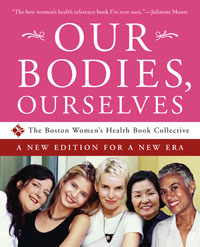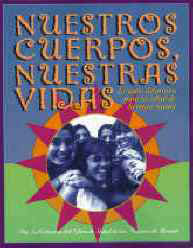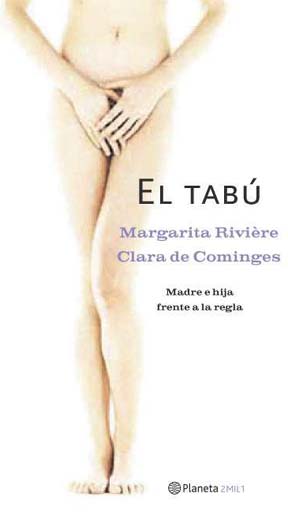COMIC STRIP: "A Visit to the Museum of Menstruation"
DIRECTORY of all topics (See also the SEARCH ENGINE, bottom of page.)
CONTRIBUTE to Humor, Words and expressions about menstruation
and Would you stop menstruating if you could?
Some MUM site links: homepage | LIST OF ALL TOPICS | MUM address
& What does MUM
mean? | e-mail the museum | privacy on this site | who runs
this museum?? |
Amazing women! | the art
of menstruation | artists (non-menstrual)
| asbestos | belts
| bidets | founder bio
| Bly, Nellie | MUM board
| books: menstruation and menopause (and reviews) | cats | company
booklets for girls (mostly) directory | contraception
and religion | costumes | menstrual cups | cup usage | dispensers | douches, pain, sprays
| essay directory | extraction
| facts-of-life booklets for girls | famous women in menstrual hygiene ads | FAQ
| founder/director biography | gynecological
topics by Dr. Soucasaux | humor | huts | links | masturbation
| media coverage of MUM | menarche
booklets for girls and parents | miscellaneous
| museum future | Norwegian
menstruation exhibit | odor | olor
| pad directory | patent
medicine | poetry directory | products,
current | puberty booklets for girls and parents
| religion | Religión
y menstruación | your remedies for
menstrual discomfort | menstrual products safety
| science | Seguridad de
productos para la menstruación | shame
| slapping, menstrual | sponges
| synchrony | tampon
directory | early tampons | teen
ads directory | tour of the former museum
(video) | underpants
& panties directory | videos, films directory
| Words and expressions about
menstruation | Would you stop
menstruating if you could? | What did women
do about menstruation in the past? | washable pads
Leer la versión en español de los siguientes temas: Anticoncepción y religión, Breve reseña - Olor - Religión y menstruación - Seguridad de productos para la menstruación.


Continued to next earlier News & Notes
NEW this month (news & letters BELOW):
Is this the first Tampax tampon? - Ad from a 1920 Globe and Mail for Mrs. Pinkham's vegetable compound - "Stanislav Grof's Perinatal Matrixes of the Unconscious and Women's Medicine" by Nelson Soucasaux, Brazilian gynecologist - The Art of Menstruation: Quiara Z. Escobar (Zoey) - Your remedies for menstrual discomfort - Humor
Would you stop
menstruating if you could? New contributions
Words and expressions
about menstruation: New: U.S.A.:
George, I'm suffocating little white mice, Mattress, Mattressi, There are
strings attached
What did European and American women use for menstruation
in the past?
Humor
Speaking of tampons . . .
The gentlelady from Texas who sold me the old Tampax - er, very early Tampax - that I enthusiastically show here sent me this photo from the 4 June edition of The Economist magazine (Web site here) in an article about the Venice Biennale, the huge show of contemporary art. The caption calls it "Bloody good show."
Artist Joana Vasconcelos created the chandelier from tampons.
The gentlelady quotes The Economist: "One of the curators of the exhibit describes the work: 'It is pop and ironic, beautiful and rich in metaphor--and it uses industrial materials in a new way.'"
New for you, but not for us. Look at the Art of Menstruation show on your MUM site, some of whose art work the Italian Marie Claire magazine featured in an article on menstruation.
But it IS a glowing thing! The Texan suggests we commission her to make one for the Museum of Menstruation when it finally opens its own public museum - a great idea.
"Calcium-rich diets may prevent PMS,"
(13 June 2005, NewScientist.com news service, by Anna Gosline)
"Encouraging women to eat a diet rich in calcium and vitamin D could prevent the development of clinical premenstrual syndrome, suggests a new US study. The findings suggest that by consuming four servings of low fat dairy products a day, women can reduce their risk of developing the disorder by almost 50%." Read the story. Read your suggestions for menstrual problems.
The Illiterate Surgeon
By NICHOLAS D. KRISTOF
"The most amazing thing about Mamitu Gashe is not what she endured but what she has become."
You must read this story about a formerly illiterate African woman who mastered repairing bladder and other fistulas caused by childbirth and is teaching others her skill. She herself suffered ostracism for years because of this common African affliction. The American physician Marion Sims essentially founded American gynecology in the 19th century by successfully treating childbirth fistulas, which lead to body waste constantly running free. And he developed the operation on American slaves. What a subject.
Letters to your MUM
Was the bustle's purpose to conceal menstrual cloth?
 |
Hi,In The Sins of Scripture (2005) John Shelby Spong writes (p. 45), "In the twentieth century, however, many new things coalesced to produce a dramatic sexual revolution. First, there was the development of the sanitary napkin, which did more to free women from the old stereotypes than has yet been fully understood. The inhibiting "bustle," designed to keep the bulky clothing worn during menstruation from being obvious, was doomed once the sanitary napkin gained ascendancy. Such cover-up styles were quickly replace by the form-fitting dresses worn by the flappers of the 1920's when they celebrated this new style by doing the Charleston.I've never heard that the bustle was designed to hide menstruation. Is that true?Thanks,****[I'd never heard this explanation either. I had always believed the bustle enhanced a woman's buttocks in order to attract men. But the Wiki encyclopedia (http://en.wikipedia.org/wiki/Bustle and from which the lady at left was taken) says this, in part:["Bustles were originally worn (in the period from 1825 to 1867) under the skirt in back, just below the waist, to keep the skirt from dragging down, especially if the fabric was heavy. Heavy fabric tended to pull the back of a skirt down and flatten it, so a petticoated or crinolined skirt would be out of shape from sitting down or just from moving. The bustle later developed into a feature of fashion on its own after the overskirt of the late 1860s was draped up toward the back and some kind of support was needed for the new draped shape. Fullness of some sort was still considered necessary to make the waist look smaller and the bustle eventually replaced the crinoline completely."]Bustle drawing from http://www.schoolsliaison.org.
|
Raw food, no protein = no periods?
Viktoras Kulviskas, founder of the Hippocratic Health Institute (with Ann Wigmore) and author of the 1975 cult classic Living into the 21st Century claims that women on no protein, raw food diets eventually cease menstruation (sometimes simply producing a clear discharge). He points to the that fact most (all?) undomesticated and wild animals do not menstruate and that's because they eat suitable diets and live healthy natural lives. He regards menstruation the consequence of toxic build up in the body and thus, unnecessary (quite unlike current arguments against menstruation, I think).
I did a little research on this book, the raw food movement and Kulviskas and there's quite a vigorous following to this day.
****
[As we all know, not eating enough food can stop menstruation. I had never heard the raw food angle. And not eating protein - is that a misprint? - well, you can't live without protein. Sure, sickness and death will stop menstruation.
[I'm no expert, but I believe only certain animals - some primates (humans included), a bat and a lemur - menstruate. Other mammals (and other animals) have strategies for reproducing not involving blood leaving the body. Why do all animals have to be like humans, which they obviously aren't? As far as I know this has nothing to do with toxic build up (unless you consider the uterine lining, the blood from ruptured vessels and vaginal secretions toxic). This theory smacks of the menstrual toxin idea (read about it) that has been around for thousands of years. I think it's been discredited.]
Your MUM lengthened her pain-free life! And Harry Finley will not be the future MUM museum director
Hi Harry,
I wanted to thank you for all the time and effort you put in your museum as it has helped restore a week of every month back to my life. In our U.S. culture, that "time of the month" is a secretive thing, and I would have never found out about cups and other alternative paraphernalia if it hadn't been for your Web page. I used to be horribly sick for several days each month when using traditional brand name tampons and pads, to the point of being bedridden. I switched to the Divacup and Lunapads after seeing them mentioned on your site by other women. Now, I barely notice when that time is around and can function like a normal human regardless of what day it is. I calculated that the information on your site has added at the very least 2-3 years of usable pain-free time to my lifetime at the very least.
And don't listen to all the women who say you can't run MUM and make comments like "Well, since you are a man... :-)" One of the crown jewels of science is being totally objective, and since nature has made it so men don't have periods, I'm sure you're a lot more objectivity up your sleeve than the women in the audience who have already formed a love/hate emotional relationship with their menstrual periods.
Thanks again,
****
[No, I didn't write this letter.
[By the way, when the permanent, physical museum opens I will not be the director unless it's as a transitional position. I want to help design it, help create exhibits and sit on the board as founder, but someone younger needs to be the boss. Read my ideas for the museum.]
Judy Blume updated "Are You There God, It's Me Margaret," and Do animals menstruate?
Hello, Mr. Finley,
I find your Web site and museum totally interesting and long overdue. I had the idea of doing a book on menstruation for teenage girls about the history of menstruation, especially about how women have dealt with it in the past compared with today (still might do it but no time in the near future, probably a few years off at least). I'm 35, born in 1970, and I remember reading "Are You There God, It's Me Margaret" by Judy Blume when I was about 10 years old. In case you've never read it, it deals with a young girl and her friends coming into puberty, very concerned about being "normal" as they develop into young women, particularly about when they get their periods. It was my introduction to the word "period" and what it meant.
I'm the youngest of four. I have only older brothers, and my mom had a hysterectomy when I was born so there were never pads or tampons around the house and I knew absolutely nothing about it. I remember asking my brother what "period" meant and having him laugh and tell another brother so I had to go research all this for myself (my mom was never open about things like this so I had to learn it on my own).
The book was written in about 1974 and it talks a lot about using belts [see some here]. I first got my period when I was eleven and by that time there were self-adhesive pads. I had never seen a belt and could only imagine what it looked like or how it was attached to a pad. Actually, until I looked at your site just a few minutes ago I had never seen one or knew exactly how it was attached or worn (I had sort of guessed but it was interesting to see).
Funny thing about the "Margaret" book is that I recently picked up a copy at a bookstore and was flipping through it and it had been rewritten to take all mention of belts out of it - when Margaret gets her first period and is trying on the pad it just talks about her pulling off the backing and sticking the pad to her panties - I distinctly remember how she had practiced trying on the belt and then had to attach it from the original book. I guess it was too confusing for this generation - it was confusing enough for me.
What I was writing about was something I never have seen much information about and I was talking to my friend and we were both curious. Don't think I'm weird or anything because I'm really not, it's just something that has bugged me for a long time and I have not seen anything about it much. I am curious about other mammals. All mammals produce eggs that must be fertilized and if they're not, do other female mammals have their periods like humans do and if so, what happens to the blood? I've never spent a lot of time observing any animal for a whole month or having it in my full sight for the entire time to know what happens but I have never seen anything to indicate a menstrual flow from the pets I've had. Just a topic to consider in the future.
[See also my answer to a letter above. I'm no expert but as far as I know only a few other primates, a bat and a lemur menstruate. Other animals have different strategies for reproduction. And dogs aren't menstruating when they're in heat; that fluid is not menstrual blood. I once wrote the Smithsonian Institution asking if someone would write a few paragraphs on the subject for MUM but no one responded. I'd still like an expert to write the article.]
Thank you for your site and your consideration of this subject.
Sincere Regards,
****
A Floridian used Spanish moss for her periods
I have just been introduced to your Web site www.mum.org. I can remember my grandmother, born 1882 in Texas and coming to South Florida in 1922, telling me that she used Spanish moss, boiled and dried to kill the chiggers [certain mite larvae that burrow into the skin and cause maddening itching. Can you imagine having a colony on your you-know-what?], wrapped in cloth that was washed and reused, to absorb her menstrual flow.
Just thought I would add that to your items of interest.
Thanks
****
Okeechobee, Florida
Does anyone know where to find these Tampax charts?
I have been researching the life of a man, deceased in 1975, who claims he was paid by Dickinson or Polak to make some drawings for Polak's 1913 obstetrics text. He continues to say that these were later used in advertising by the Tampax corp. The firm was later bought by Procter & Gamble, whose archivist tells me not a lot of information was transferred to them and suggested I try your Web site.
In a letter dated 1971 the man describes this art work as "sagittal sections of female reproductive and other pelvic organs" and says Tampax distributed a plastic laminate, double-sided chart showing it.
Have you any Tampax ads or literature that show something like this?
[I don't but I believe Tampax used them at the 1939 World's Fair in their booth to demonstrate how tampons work. Anyone have any idea where to find one? Write me.]
I appreciate your attention.
****
In spite of cheesy videos, she's trying Instead
I found MUM quite some time ago and recently found it again, thanks a lot for starting such an interesting museum. I hope its around when I have kids and they grow up because this site explains things better than I would.
Anyways, I've read most of the reviews of Instead [menstrual cup; read a history here] on this site because I recently found them in my local Rite-Aid. A lot of people have commented about the 1-800 number being disconnected and the Web site shutdown; while I'm not sure about the number, I can tell you that they now have a new Web site: www.softcup.com.
Anyone with questions about the product can go there for a surprisingly cheesy set of video clips that actually were somewhat helpful. Anyone who wants to try them and can't find them should go to www.riteaid.com to order them. It's actually cheaper to get them online than in the stores.
Now I just have to see how well it works.
Blessed Be
****





